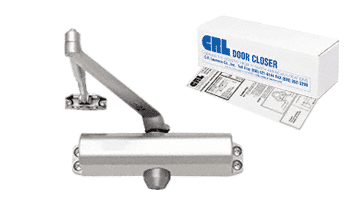Introduction
In many industries, maintaining a controlled environment is critical for safety and efficiency. One vital instrument that assists in this process is the door pressure gauge. These gauges are essential for monitoring pressure differentials, which helps prevent contamination and ensures that air quality is maintained in sensitive areas such as cleanrooms, laboratories, and healthcare facilities. This article explores what door pressure gauges are, how they work, and their significance in various applications.

What is a Door Pressure Gauge?
A door pressure gauge is a device designed to measure the learn about door gauge here difference between two areas—usually the inside and outside of a controlled space. By continuously monitoring this pressure differential, these gauges help ensure that airflows remain within specified limits, protecting sensitive processes and materials from contamination.
How Door Pressure Gauges Work
Door pressure gauges operate based on the principle of pressure differentials. When the pressure inside a room differs from that outside, the gauge detects this difference and displays it, allowing users to monitor airflow conditions.
- Sensing Element: The most common sensing element in these gauges is a diaphragm, which responds to pressure changes. When the pressure varies, the diaphragm moves, causing a needle or digital display to reflect the current pressure level.
- Display: Pressure readings can be shown through an analog dial or a digital screen, making it easy for users to understand the current conditions at a glance.
Types of Door Pressure Gauges
- Analog Gauges: These traditional gauges feature a dial with a needle that indicates pressure levels. They are simple to read but may not offer the precision of their digital counterparts.
- Digital Gauges: Digital door pressure gauges provide more accurate measurements and often include advanced features like alarms, data logging, and connectivity for remote monitoring.
Importance of Door Pressure Gauges
- Contamination Prevention: In cleanrooms and laboratories, maintaining a specific pressure—either positive or negative—is crucial to keep contaminants out. For instance, positive pressure helps ensure that air flows out of a space, preventing outside air from entering.
- Safety Assurance: Monitoring pressure differentials is vital for the safety of personnel and equipment, particularly in environments handling hazardous substances. Proper airflow management can prevent accidents and ensure compliance with safety regulations.
- Regulatory Compliance: Many industries are required to adhere to strict standards regarding environmental controls. Door pressure gauges play a crucial role in helping facilities comply with these regulations, thus avoiding penalties.
- Operational Efficiency: Regular monitoring of pressure differentials can identify issues with HVAC systems or air handling units, allowing for timely maintenance and improving overall efficiency.
Using a Door Pressure Gauge
- Installation: Proper installation is key to effective monitoring. Position the gauge at a height and location that allows for easy visibility and access, typically near the door of the controlled environment.
- Calibration: Regular calibration is essential to ensure accurate readings. Follow the manufacturer’s guidelines for calibration frequency and procedures.
- Monitoring: Regularly check the gauge to ensure pressure differentials remain within the desired range. Quick adjustments can prevent larger issues from arising.
- Data Recording: Keep a log of pressure readings over time to track changes and identify trends, which can be invaluable for troubleshooting and compliance reporting.
Maintenance Tips
- Routine Calibration: Schedule routine calibrations according to the manufacturer’s specifications to maintain accuracy.
- Cleaning: Regularly clean the gauge to prevent dust and debris from affecting its performance.
- Inspection: Conduct visual inspections to check for any signs of damage or wear, and replace parts as necessary.
- Training: Ensure that staff are trained on the proper use and interpretation of the gauge readings to maximize its effectiveness.
Conclusion
Door pressure gauges are critical tools for maintaining controlled environments across various industries. By understanding their function, types, and importance, facilities can enhance safety, prevent contamination, and ensure regulatory compliance. With proper usage and maintenance, door pressure gauges contribute significantly to the efficiency and effectiveness of operations in sensitive environments.
